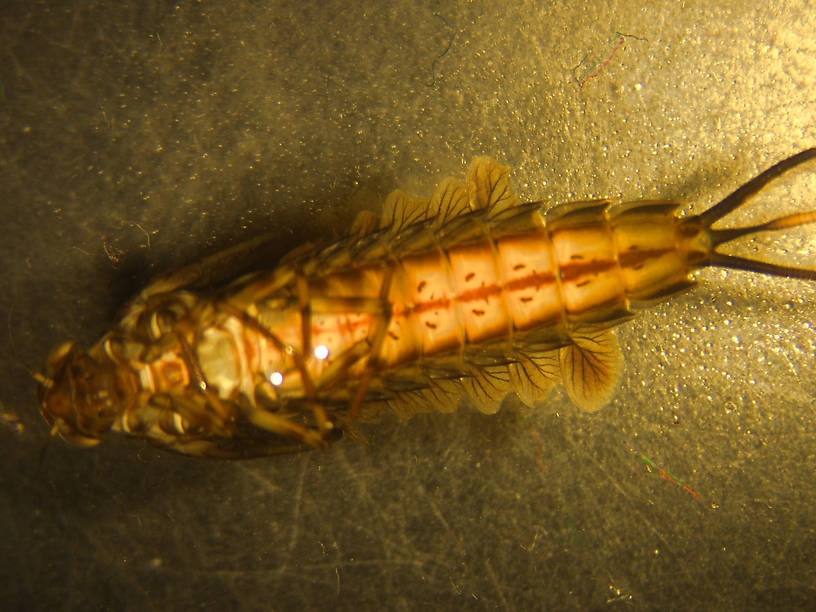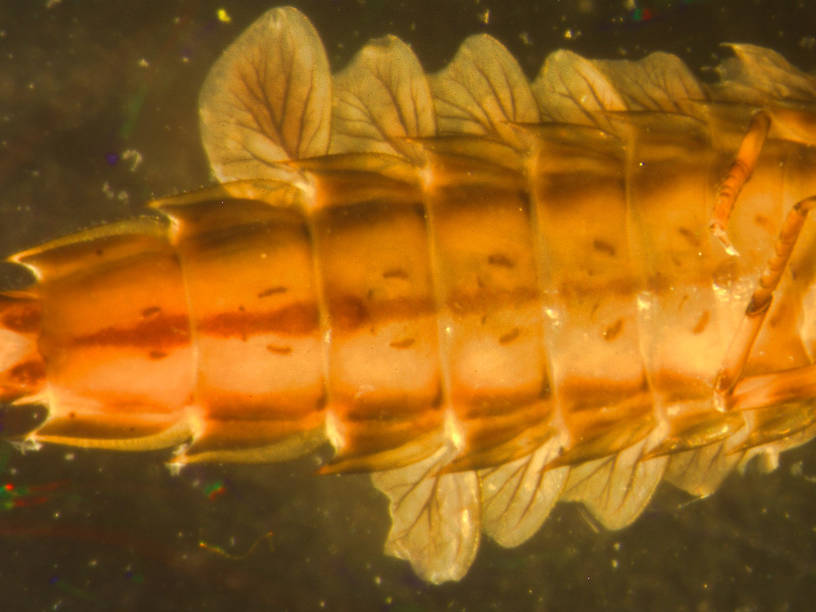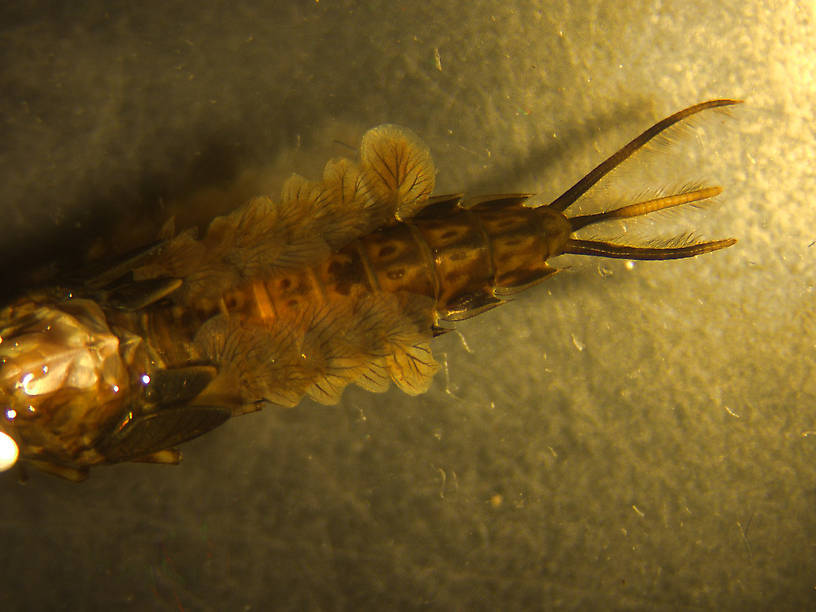
Blue-winged Olives
Baetis
Tiny Baetis mayflies are perhaps the most commonly encountered and imitated by anglers on all American trout streams due to their great abundance, widespread distribution, and trout-friendly emergence habits.
Featured on the forum

This wild-looking little thing completely puzzled me. At first I was thinking beetle or month larva, until I got a look at the pictures on the computer screen. I made a couple of incorrect guesses before entomologist Greg Courtney pointed me in the right direction with Psychodidae. He suggested a possible genus of Thornburghiella, but could not rule out some other members of the tribe Pericomini.

Troutnut is a project started in 2003 by salmonid ecologist Jason "Troutnut" Neuswanger to help anglers and
fly tyers unabashedly embrace the entomological side of the sport. Learn more about Troutnut or
support the project for an enhanced experience here.
Siphlonurus phyllis (Gray Drake) Mayfly Nymph Pictures
This specimen was the first record from Montana and the first record from the mountain west except Alberta where it was first described. It was found in temporary ponds.The nymph has double gills on all segments. The abdominal stripe is an important feature for identification



This mayfly was collected from Temporary ponds- Glacier Nat. Park in Alaska on July 2nd, 2007 and added to Troutnut.com by Bnewell on June 26th, 2011.
Start a Discussion of Nymph
Siphlonurus phyllis (Gray Drake) Mayfly Nymph Pictures
Collection details
Location: Temporary ponds- Glacier Nat. Park, Alaska
Date: July 2nd, 2007
Added to site: June 26th, 2011
Author: Bnewell
Date: July 2nd, 2007
Added to site: June 26th, 2011
Author: Bnewell

